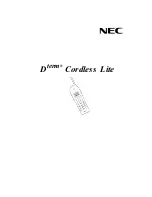
ENGLISH
43
Trigger Switch (fi g. 1)
WARNING:
This tool has no provision
to lock the trigger switch in the ON
position and should never be locked ON
by any other means.
Release the trigger switch lock-off button (a) by
pressing the button as shown. Pull the trigger switch
(b) to turn the motor on. Releasing the trigger switch
turns the motor off.
Depth of Cut Adjustment (fi g. 1, 3)
1. Loosen the depth adjustment lever (d).
2. Move the shoe (e) to obtain the correct depth of
cut.
3. Tighten the depth adjustment lever (d).
4. For optimal results, allow the saw blade to
protrude from the workpiece by about 3 mm
(see inset in figure 3).
Bevel Adjustment (fi g. 4)
The bevel angle can be adjusted between 0° and
50°.
1. Loosen the bevel adjustment knob (j).
2. Set the bevel angle by tilting the saw shoe (e)
until the mark indicates the desired angle on
the scale.
3. Tighten the bevel adjustment knob (j).
Shoe Adjustment for 90° Cuts
(fi g. 1, 5)
1. Adjust the saw to 0° bevel.
2. Retract the blade guard using the lever (f) and
place the saw on the blade side.
3. Loosen the bevel adjustment knob (j).
4. Place a square against the blade and shoe to
adjust the 90° setting.
5. Turn the calibration screw (q) so that the shoe
will stop at the proper angle.
6. Confirm the accuracy of the setting by checking
the squareness of an actual cut on a scrap
piece of material.
Rip Guide Installation and Usage
(fi g. 6)
Ripping is the process of cutting wider boards into
narrow strips, cutting the grain lengthways. Hand
guiding is more difficult for this type of sawing and
the use of the rip guide is recommended.
WARNING:
For your own safety, read
the instruction manual before using
any accessory. Failure to heed these
warnings may result in personal injury
and serious damage to the saw and
accessory. When servicing this tool, only
use identical replacements.
ASSEMBLY
1. Loosen the rip guide knob (o).
2. Insert the rip guide (p) as shown in figure 6.
3. Tighten the rip guide knob (o) securely.
Use the supplied rip guide only with the DCS391
circular saw. Use of this rip guide with other saws
may increase the risk of kickback and injury.
Before making a cut, ensure the rip fence is securely
fastened to the tool.
After installing the rip guide on the saw or after
moving the guide to change the rip width setting,
check the operation of the lower guard before
starting the saw and making a cut to make sure that
the rip guide does not affect proper guard operation.
Replacing the Saw Blade (fi g. 7)
1. Engage the blade lock button (k) and unscrew
the blade clamping screw (h) by turning
clockwise using the hex key supplied with the
tool.
2. Retract the lower blade guard (g) using the lever
(f) and replace the blade. Reinstall the washers
(r, s) in the correct position.
3. Check the direction of rotation of the blade.
4. Thread on the blade clamping screw (h) by
hand to hold the washer in position. Turn anti-
clockwise.
5. Press the blade lock button (k) while turning the
spindle until the blade stops rotating.
6. Tighten the blade clamping screw firmly using
the hex key.
Blades
WARNING:
To minimize the risk of
eye injury, always use eye protection.
Carbide is a hard but brittle material.
Foreign objects in the workpiece such
as wire or nails can cause tips to crack
or break. Only operate saw when proper
saw blade guard is in place. Mount
blade securely in proper rotation before
using, and always use a clean, sharp
blade.
















































